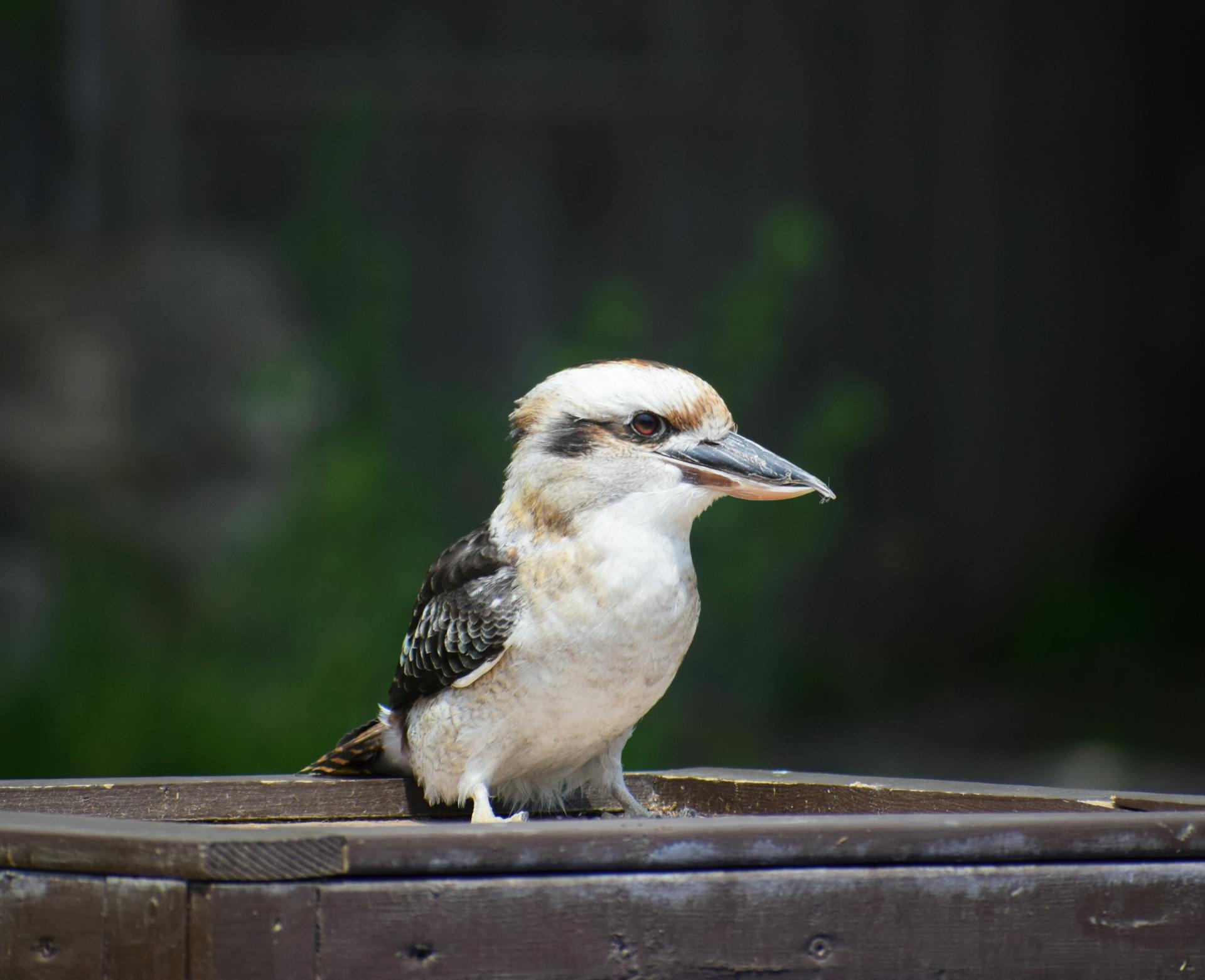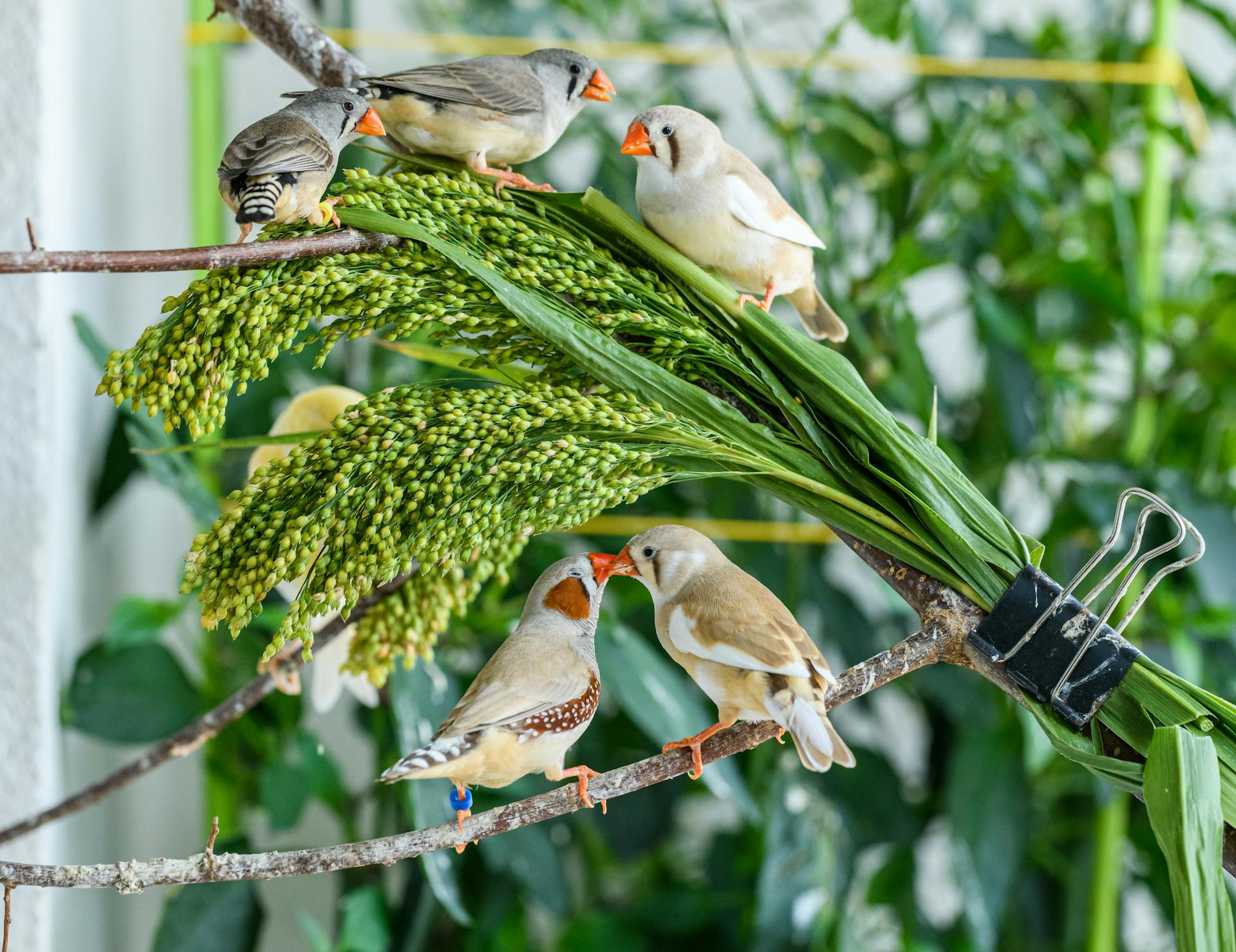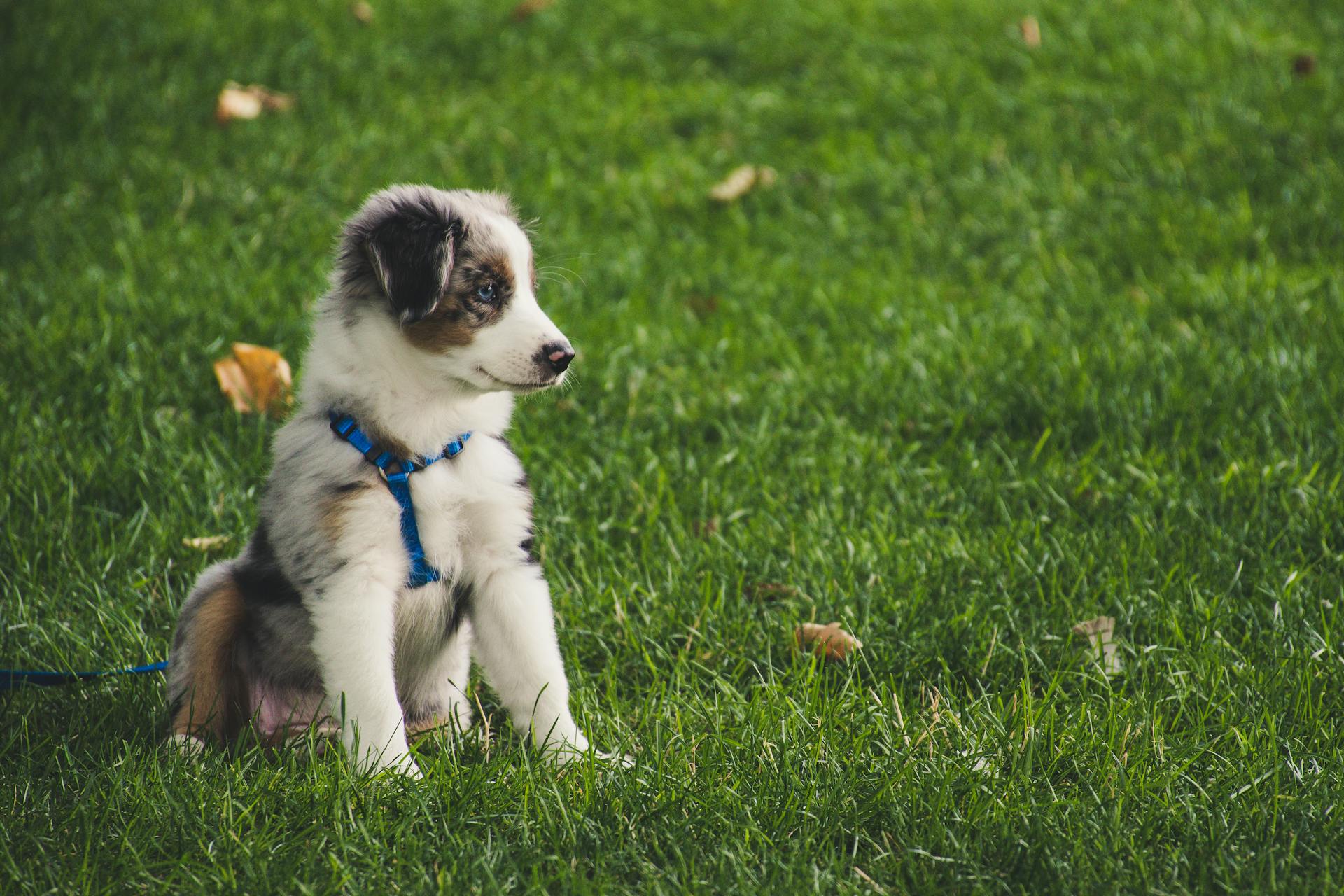
The Australian Terrier is a small but feisty breed that's perfect for families and first-time dog owners. They weigh around 8-11 pounds and stand about 10 inches tall.
Their short coats are easy to maintain, requiring only occasional brushing and bathing. They're also relatively low-maintenance when it comes to grooming.
Australian Terriers are highly intelligent and active dogs that need regular exercise to stay happy and healthy. A daily walk and some playtime should do the trick.
They're also known for their friendly and outgoing personalities, making them great companions for people of all ages.
Breed Characteristics
Australian Terriers are adaptable dogs that can thrive in both apartment living and rural environments. They're perfect for families with children, as they're playful, lively, and enjoy the company of respectful kids.
These terriers need regular attention and can become bossy or show guarding traits towards other animals if not socialized properly. They also require moderate exercise and playtime to keep them happy and healthy.
Here's a breakdown of their key characteristics:
Breed Characteristics
The Australian Terrier is a small but sturdy dog, with a medium-boned build that's longer in proportion to their height.
Their ears are pricked and stand upright, while their tail is docked or undocked, depending on the breeder's preference. The AKC breed standard allows for both options, but some veterinary groups and countries have banned docking due to medical and behavioral concerns.
Australian Terriers have small, dark brown or black eyes that look alert and perceptive. Their nose is black and located at the end of a long, narrow muzzle.
Their coat is a double coat, with a harsh outer layer that's about 2.5 inches long and a soft undercoat. The outer coat is shorter on the tail, rear legs, and around the ankles and feet, but longer around the neck, forming a protective ruff.
Australian Terriers come in a range of coat colors, including blue and tan, solid red, and sandy. Their size is consistent, with males and females standing 10 to 11 inches tall and weighing 14 to 16 pounds.
Coat Color and Grooming
The Australian Terrier's coat is one of its most distinctive features, and it's also relatively low maintenance. This dog's coat is more than just for looks - it's a vital part of their protection against the elements and even snake bites.
The Australian Terrier's coat comes in three color types: blue and tan, sandy, and red. Their harsh, wiry coat resists matting and repels dirt, making it easy to keep clean.
Brushing their coat once a week is a good rule of thumb, as it helps prevent kinks and shedding. You can use a stripping comb or knife to remove dead hair and maintain that signature terrier look.
Their undercoat is short and soft, while the outer coat is harsh and straight, about 2.5 inches long. The fur on their muzzle, lower legs, and feet is shorter, making it easier to clean.
The Australian Terrier sheds minimally, but regular brushing and combing can help reduce shedding even further. Stripping of dead hair every 6 to 8 weeks is also recommended to keep their coat looking its best.

Here are some key grooming tips for your Australian Terrier:
- Brush their coat once a week to keep it healthy and tangle-free.
- Trim their toenails once a month to prevent overgrowth.
- Bathe them as needed, usually every 3 to 4 months, unless they get dirty or smelly.
- Check their ears weekly for dirt, redness, or infection.
- Brush their teeth daily to prevent dental problems.
Overall, the Australian Terrier's coat is a remarkable feature that requires regular maintenance to keep it looking its best. By following these simple grooming tips, you can help keep your Australian Terrier clean, healthy, and happy.
How to Care
The Australian Terrier is a relatively clean dog and leaves little to no smell.
To keep your Australian Terrier clean, bathe them at least once every 4 weeks to prevent dirt from building up in their coat.
Brushing your Australian Terrier weekly will help prevent kinks and reduce shedding. It's also essential for maintaining a glossy finish.
Australian Terriers have a harsh, wiry coat that resists matting and repels dirt, making them relatively easy to groom. However, they still require regular brushing and combing to prevent kinks and shedding.
Their nails should be trimmed every 3 to 4 weeks to avoid tears resulting from overgrowth, so make sure to add nail trimming to your regular grooming routine.
Australian Terriers are intelligent and eager to learn, but they can have a stubborn streak at first, so be patient and consistent with training.
To keep your Australian Terrier's coat looking its best, brush it at least once per week to keep the fur healthy and tangle-free.
Expand your knowledge: 4 Month Staffordshire Bull Terrier
Temperament and Personality
The Australian Terrier is a dog that craves company by nature, showing a spunky personality with a lot of sass in how they interact with people.
They're known for their cleverness and affection for others, thriving on their independent nature, although they can be stubborn. Exercise is essential to keep them content and well-balanced, as they have medium-level energy.
Australian Terriers are generally joyful and upbeat, keeping their family entertained with their energetic lifestyle. They bond strongly with their families and can get very attached to humans.
However, they can be aloof with people they don't know well, children, neighbors, or strangers. Socialization, starting when they're a puppy, will help them get used to meeting new people and situations.
They do best as the only dog in your home, as they were bred to hunt vermin and small pets, like cats and bunnies, will be high on their list of things to chase. With the right approach and experienced pet parents, they can be well-trained, despite their strong-willed and independent nature.
Australian Terriers are keen to please and revel in human contact and praise, making them generally easy to train. They are bonded to their owners and do not like to be left alone, which can be a challenge for owners with busy schedules.
Additional reading: When Will Shiba Inu Hit $1
Health and Nutrition
Australian Terriers are generally healthy dogs, but like all breeds, they can be prone to certain conditions. Patellar luxation, a dislocation of the kneecap, is a common issue, where the knee joint can slide in and out of place, causing pain.
Australian Terriers can also be prone to Legg-Perthes disease, which causes a deformity of the hip joint ball, leading to arthritis or inflammation. This condition can be inherited or related to injury.
To keep your Aussie healthy, it's essential to monitor their weight and limit treats to prevent conditions like diabetes and joint issues from developing or worsening. A high-quality dog food with properly controlled portions is also crucial, with a recommended daily amount of 1/2 to 1 cup dry food a day.
Here are some common health issues in Australian Terriers:
- Patellar luxation
- Legg-Perthes disease
- Diabetes mellitus
- Legg-Calve-Perthes
- Cataracts
- Epilepsy
Regular check-ups with your veterinarian can help identify any potential health issues early on, and they can provide guidance on the best diet and feeding schedule for your individual dog.
Health

Australian Terriers are generally a healthy breed, but like all breeds, they can be prone to certain conditions.
Their life expectancy is around 11-15 years, which is quite impressive.
Australian Terriers can be prone to patellar luxation, a condition where the kneecap slips out of place, causing pain and potentially crippling the dog.
Legg-Calve-Perthes disease is another condition they can develop, which affects the hip joint and can lead to degeneration.
Diabetes is also a risk, with symptoms including excessive thirst, increased peeing and appetite, and weight loss.
Allergies are common in Australian Terriers, with three main types: food allergies, contact allergies, and inhalant allergies.
To ensure your Australian Terrier stays healthy, it's essential to work with a responsible breeder who has performed genetic tests on the parents.
Here are some common health problems associated with the breed:
- Luxating patella: causes the kneecap to slip in and out of place
- Legg-Calve-Perthes disease: degeneration of the hip joint
- Diabetes: excessive thirst, increased peeing and appetite, and weight loss
- Allergies: itchy skin, digestive problems, and other symptoms
Feeding your Australian Terrier a high-quality diet with controlled portions can help prevent conditions like diabetes and joint issues.
Consult your veterinarian to determine the best diet and portion plan for your dog based on their age, weight, and activity level.
Here's an interesting read: What Do Yorkshire Terriers Eat
Diet and Nutrition

Australian Terriers have hearty appetites, but that doesn't mean they should be overfed. They need a diet of high-quality dog food with properly controlled portions.
The recommended daily amount of food for an Australian Terrier is anywhere from 1/2 cup to 1 cup, split into multiple meals. This can vary depending on their size, age, build, metabolism, and activity level.
To prevent conditions like diabetes and joint issues, it's essential to monitor your dog's weight and limit treats. Overfeeding can lead to obesity, which can limit their mobility and lead to other health issues.
You should consult your veterinarian to determine the best food and feeding schedule for your individual dog. They can help you come up with a healthy diet and portion plan based on your dog's age, weight, and activity level.
High-quality commercial dog food is essential for sustaining your Australian Terrier's active lifestyle. Choose a formula that fits their age and stage in life, whether it's puppy, adult, or senior.

Treats can equal calories, so be mindful of how many you give your dog, especially during obedience training. Instead of always rewarding your pup with food, consider giving them playtime with a special toy or a massage.
If you notice your dog isn't doing well with a particular food, watch out for symptoms like itching, vomiting, or diarrhea. Consult your vet right away to determine the best course of action.
Training
Australian Terriers respond well to positive reinforcement training methods, making them a great breed for competitive dog sports like agility training.
To keep your dog engaged, keep training sessions short and frequent to prevent boredom. Reward your dog with treats, affection, and playtime for desirable behaviors during training.
Australian Terriers can be stubborn and easily distracted, so consistency is key.
A reliable recall may require extra time and work, especially since their hunting instincts can lead them to chase small pets or become aggressive with animals they're unfamiliar with.
Keep your Australian Terrier on a schedule to make training easier, and use lots of treats and praise when they do the right thing.
Start with the basics of obedience, like sit, stay, and come, and teach them how to walk nicely on a leash.
If your Australian Terrier puppy has trouble with house training, don't fret! Small dogs have small bladders and need to go out more often.
Take your pup out about 20 minutes after every meal and reward them when they potty outside, using the same cue words like "Let's go potty" so they start to learn what it means.
Crate training is a great way to help potty train your puppy, as dogs like to keep their "dens" clean.
Socialization is crucial to help your Australian Terrier get used to meeting new people and other dogs and other social situations.
Starting early, take your dog on walks and let them sniff and meet new people and other friendly dogs, and enroll in puppy preschool to help them learn to play nicely with other puppies and interact with other pup parents.
One characteristic you might need to work on with your Australian Terrier is excessive barking, but you can teach them to know when to bark and when to keep their thoughts to themselves.
A unique perspective: Bernese Mountain Dog Breeders New York
Ownership and Adoption
If you're considering bringing an Australian Terrier into your family, it's essential to think about the costs involved. Australian terriers typically cost around $1,200 to $1,500, but prices can be significantly higher for pedigreed puppies from a show dog's litter.
If you're looking to adopt, there are many shelters and breed-specific rescues that can help you find your next best friend. You can start by checking your local shelter or contacting breed-specific rescues to see if they have any Australian Terriers in need of forever homes.
To find a reputable breeder, make sure to ask for the litter's medical history and get to meet the puppies' parents. Responsible breeders should also be willing to show you where the dogs are raised – in a comfortable, safe, indoor location.
Here are some resources to help you get started:
- Australian Terrier Club of America
- Australian Terrier Rescue
- AKC Australian Terrier Breeders
Ideal Owner
If you're considering bringing an Australian Terrier into your family, it's essential to think about what kind of owner you'll be.
You'll need to have plenty of energy to keep up with this feisty little dog, and some previous experience with terriers is recommended.
Ideally, you'll be someone who enjoys training and can provide a good dash of calm to temper your Aussie's spirit.
If you're home most of the day or can take your dog with you, you'll be a great match for this breed.
Here are some key characteristics of an ideal Australian Terrier owner:
Adopt or Buy
If you're considering bringing an Australian Terrier into your family, you have two main options: adopting or buying.
Australian terriers typically cost around $1,200 to $1,500, but prices can be higher for pedigreed puppies from a show dog's litter.
You can start your search for an Australian Terrier by checking shelters and breed-specific rescues. Many rescues can help you connect with terrier rescues within your region, or they can introduce you to similar terrier breeds that can join your family.
Readers also liked: Will Shiba Inu Reach 1 Cent
If you do decide to buy from a breeder, make sure they provide the litter's medical history and allow you to meet the puppies' parents.
The national breed club, breed-specific rescues, and the AKC can help you find a reputable breeder.
Here are some resources to get you started:
- Australian Terrier Club of America
- Australian Terrier Rescue
- AKC Australian Terrier Breeders
Frequently Asked Questions
Does Australian Terrier bark a lot?
Australian Terriers can be prone to excessive barking if left alone for extended periods, leading to potential behavioral issues. Proper training and attention can help minimize this problem.
How much does an Australian Terrier cost?
The average cost to purchase an Australian Terrier is between $1,000-$1,800. Learn more about the breed's monthly and lifetime costs to plan ahead.
Sources
Featured Images: pexels.com


